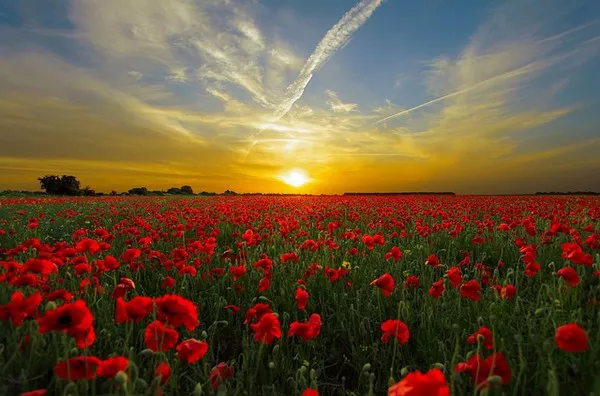Gardening is a time-honored tradition that allows individuals to connect with nature, cultivate beauty, and promote environmental well-being. One fundamental aspect of gardening is the practice of planting flowers, which not only adds vibrant colors and scents but also contributes to the health of the ecosystem. When it comes to enhancing the aesthetics and vitality of your garden, incorporating mulch into your flower planting process can be a game-changer. This article delves into the art of planting flowers in mulch, highlighting the benefits, techniques, and considerations to ensure a successful and thriving garden.
The Benefits of Mulching
Mulching is the practice of applying a layer of material, such as organic matter or inorganic materials, onto the soil surface. This technique offers a plethora of benefits for gardeners, plants, and the environment:
1.Moisture Retention: Mulch acts as a protective barrier, reducing water evaporation from the soil. This helps maintain consistent moisture levels, especially during hot and dry periods, reducing the need for frequent watering.
2. Weed Suppression: A layer of mulch inhibits weed growth by blocking sunlight, preventing weed seeds from germinating and establishing a foothold in the soil.
3. Soil Temperature Regulation: Mulch insulates the soil, shielding it from extreme temperature fluctuations. This encourages a more stable and favorable environment for plant growth.
4. Erosion Prevention: Mulch helps prevent soil erosion caused by heavy rain or wind, preserving the integrity of your garden beds.
5. Nutrient Enrichment: Organic mulches gradually break down, releasing essential nutrients into the soil. This natural process enhances soil fertility and provides a steady supply of nourishment for your flowers.
6. Aesthetic Appeal: Mulch adds a polished and uniform appearance to garden beds, complementing the visual appeal of your flowers.
Selecting the Right Mulch
Before you begin planting flowers in mulch, it’s essential to choose the right type of mulch for your garden’s specific needs. There are two main categories of mulch: organic and inorganic.
Organic Mulches:
These are derived from natural materials such as wood chips, straw, leaves, and compost. Organic mulches gradually decompose, enriching the soil with nutrients over time. They are an excellent choice for flower beds where soil improvement is desired.
Inorganic Mulches:
These include materials like gravel, stones, and landscape fabric. Inorganic mulches do not break down and are long-lasting, making them suitable for areas where aesthetics and weed control are the primary focus.
Select a mulch that aligns with your gardening goals and the needs of your flower plants. Consider factors such as local climate, soil type, and the specific requirements of the flowers you intend to plant.
Planting Flowers in Mulch: Step-by-Step Guide
Prepare the Soil: Ensure the soil in your flower bed is well-prepared by loosening it to a depth of at least 6-8 inches. Remove any weeds, rocks, or debris that may hinder plant growth.
1.Apply Mulch: Before planting, lay down a layer of mulch about 2-4 inches thick. Avoid piling mulch against the stems or trunks of plants, as this can lead to moisture retention and potential rot.
2. Create Planting Holes: Gently push aside the mulch to expose the soil beneath. Use a trowel or your hands to create planting holes at appropriate intervals, depending on the spacing requirements of your flower species.
3. Plant the Flowers: Carefully remove the flowers from their containers and place them in the prepared holes. Fill the holes with soil, patting it gently to secure the plants in place.
4. Water Thoroughly: After planting, water the flower bed thoroughly. The mulch will help retain moisture and prevent excessive evaporation, ensuring the newly planted flowers receive adequate hydration.
5. Mulch Maintenance: As your flowers grow, periodically check the mulch layer’s thickness. If it begins to thin out, add a fresh layer of mulch to maintain the desired depth and reap the full benefits of mulching.
Considerations and Best Practices
1.Mulch Depth: The ideal mulch depth for flower beds is typically between 2 to 4 inches. Applying too much mulch can lead to waterlogging and hinder oxygen exchange, while too little mulch may not provide the desired benefits.
2. Mulch Types for Flowers: Organic mulches like wood chips, straw, or compost are generally preferable for flower beds. They improve soil structure, foster beneficial microorganisms, and provide a steady source of nutrients.
3. Avoid Planting Too Deep: When planting flowers in mulch, be mindful of the planting depth. Ensure that the top of the plant’s root ball is level with the soil surface to prevent suffocation.
4. Mulch Placement: Keep mulch a few inches away from the plant stems to prevent moisture accumulation and potential rot. Creating a small “doughnut” shape around each plant ensures proper air circulation.
5. Mulch Composition: Over time, organic mulches break down and may require replenishment. Regularly turning the mulch or adding new layers will help maintain its effectiveness and appearance.
Conclusion
Planting flowers in mulch is a thoughtful and strategic approach to cultivating a thriving garden. The symbiotic relationship between flowers and mulch offers numerous benefits that contribute to the health, aesthetics, and longevity of your outdoor space. By selecting the right type of mulch, following proper planting techniques, and adhering to best practices, you can create an enchanting and flourishing garden that showcases the beauty of nature and your gardening prowess. Embrace the art of planting flowers in mulch, and watch your garden come to life in a symphony of colors and vitality.


